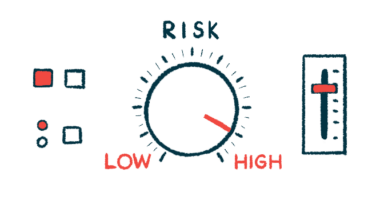Cushing’s disease tied to high clot risk after pituitary tumor surgery
Study highlights older age, high BMI as additional risk factors

After undergoing surgery to remove a pituitary tumor, people with Cushing’s disease face the highest risk of developing dangerous blood clots, a new study has found.
This heightened risk — specifically of a complication called deep vein thrombosis (DVT) — is tied to factors such as age, body mass index, and the patients’ underlying abnormal blood clotting driven by high cortisol levels.
Scientists now hope an artificial intelligence-based model, developed from this data, can help doctors proactively monitor and manage the most vulnerable surgical patients.
The study, “Risk Comparison and Assessment Model of Deep vein thrombosis in Patients with Pituitary Adenomas after Surgery: A Retrospective Cohort Study,” was published in the European Journal of Surgical Oncology.
People with Cushing’s disease experience a wide range of symptoms driven by excess levels of the hormone cortisol. This is caused by tumors on the brain’s pituitary gland that release adrenocorticotropic hormone (ACTH), which signals the adrenal glands near the kidneys to make cortisol.
Understanding Cushing’s tumors and treatment
Cushing’s-causing tumors belong to a class called pituitary adenomas, which are typically noncancerous. Various types of pituitary adenomas can cause other diseases.
The main first-line treatment for Cushing’s is surgery to remove the tumor. Any surgery carries a risk of venous thromboembolism (VTE), where blood clots in the veins block blood flow. One form, DVT, occurs when clots form in deep veins, typically in the lower legs.
Data suggest the risk of VTE may be especially high in people undergoing pituitary adenoma surgery, particularly those with Cushing’s disease, who can have underlying blood clotting abnormalities due to high cortisol levels.
However, the specific risk factors that make some people more susceptible have not been established.
“Developing a comprehensive understanding of the high-risk factors associated with postoperative DVT is essential to improve patient management and enable proactive prevention strategies,” the researchers wrote.
The scientists retrospectively reviewed data from 397 people (15 and older) with a pituitary adenoma, who underwent surgery at their hospital in China from 2018 to 2023 and had a lower limb ultrasound to look for possible DVT.
The results showed that 104 people (7.2%) developed lower limb DVT within a week of surgery, and several clinical differences were observed between those who did or did not experience the complication.
Final statistical analyses showed that older age and higher body mass index (BMI) — a ratio of weight to height — were independent risk factors for DVT. Having catheters placed into blood vessels and longer hospital stays also raised the risk.
Results from various lab tests related to blood clotting were also independent risk factors for DVT.
Among those in the analysis, 20 had Cushing’s disease. Analyses showed the highest incidence of DVT was seen in that subgroup, occurring in 55% of patients (11 people).
Compared to people with other pituitary adenoma types, those with Cushing’s tended to have blood test results indicative of a faster blood clotting profile.
Using the data, the researchers developed an artificial intelligence-based model for predicting who would develop DVT after pituitary adenoma surgery. The best version of the model had around an 86% accuracy.
The scientists believe the model could ultimately lead to “improved risk assessment for this condition,” helping to identify patients most in need of blood clot monitoring and intervention after surgery.
For example, they noted people with Cushing’s disease might benefit from preventive steps to improve circulation after surgery, such as compression stockings or more frequent movement and walking.
However, given the retrospective nature of the study and variability in clinical ultrasound practices, the findings are not definitive.
“Further research is needed to validate these findings and to guide clinical decision-making in the development of effective [VTE] prevention strategies,” the team concluded.







